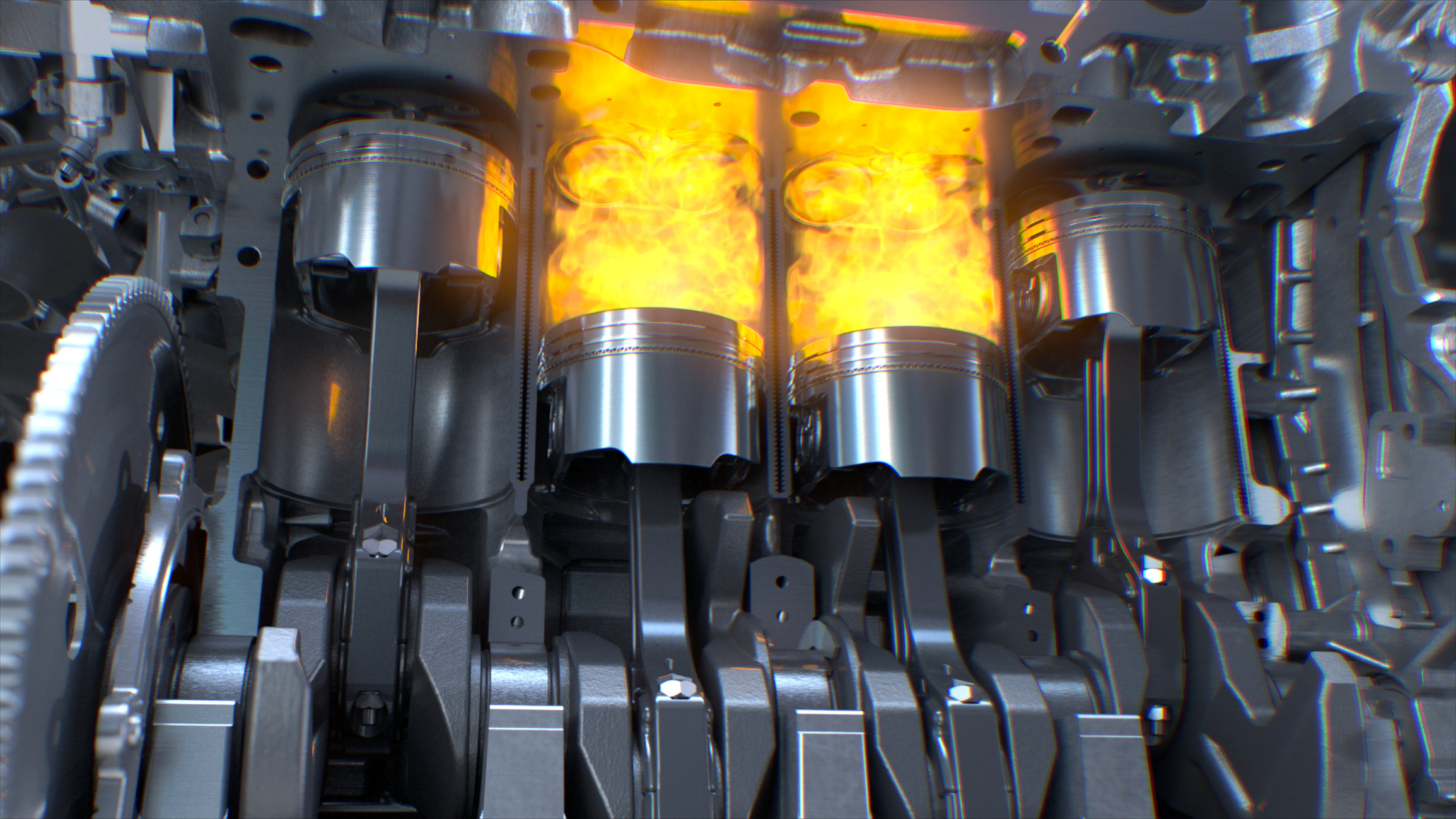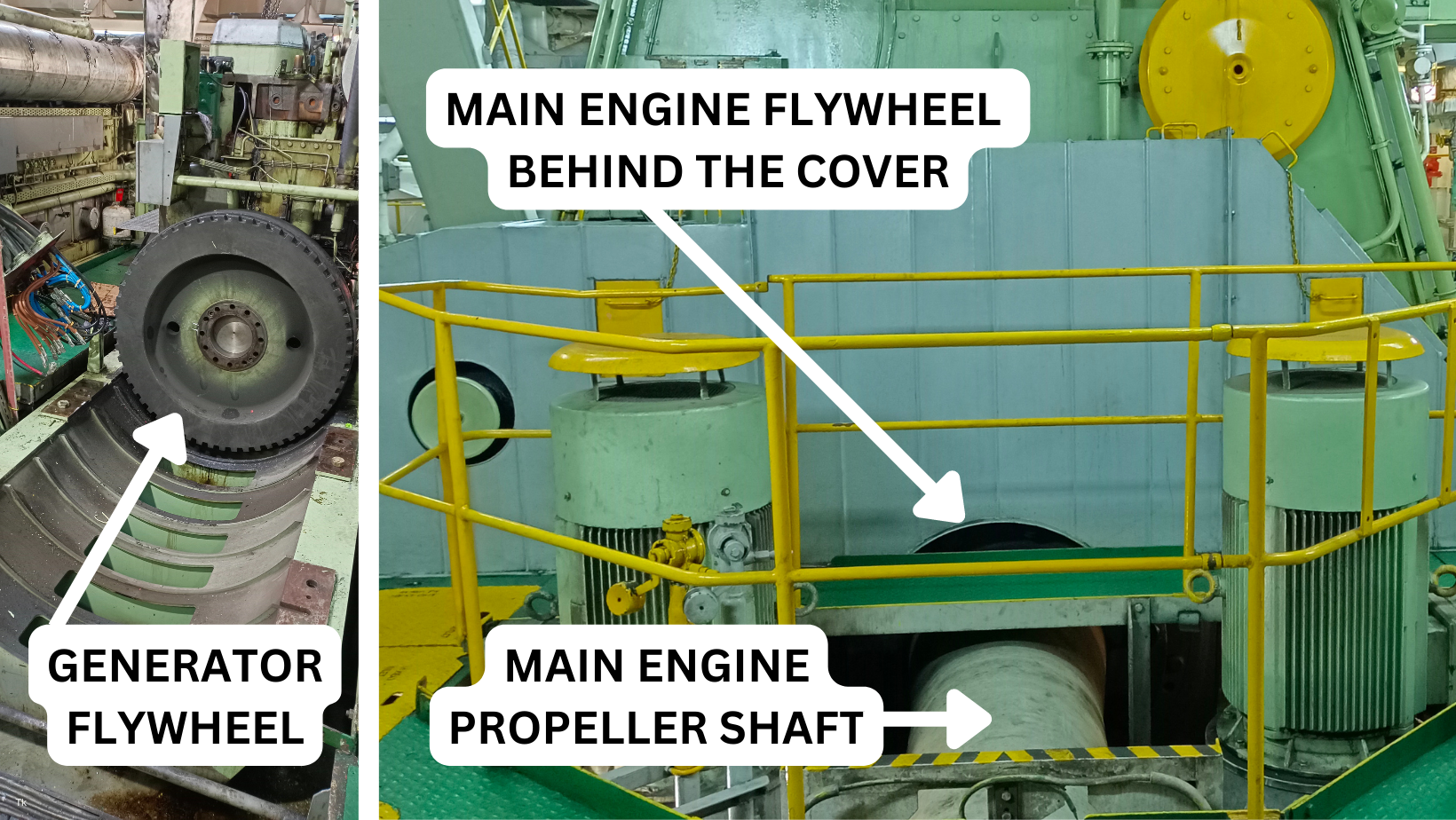Marine Engine Power and Efficiency Terminology | Indicated Power | Brake Power | Mechanical Efficiency | Thermal Efficiency
Marine engine terms for power
-
Indicated power
-
Brake power
-
Friction power
-
Shaft power
Indicated Power (IP)
Definition
This is the total power produced by an internal combustion engine in its cylinders in one cycle. When the fuel explodes in the IC engine, the gas pressure pushes the piston down from the TDC to the BDC. The power produced by the gas is known as the indicated power for that cylinder and the stroke when it occurs is known as the power stroke.

But not all of the indicated power reaches the propeller shaft. There are frictional losses that need to be overcome. Thus, indicated power is the maximum power produced theoretically and not the actual power that reaches the propeller.
The indicated power is called so because it is measured using an indicator mechanism. The mechanism draws the indicator diagram on a P-V graph which is then used to calculate power.
Calculation of Indicated power (IP)
Power by definition is the rate at which work is done. In our case, the work done by the gas is the displacement of the piston over the stroke length.
Thus, we can say that for one cylinder,
Indicated power (IP) = Work done on the piston / Time
IP = [Force * Stroke length] / Time
IP = [(Pressure * Area) * Stroke Length] / Time
Let us understand the above terms:
-
Pressure – Pressure in our case is the pressure exerted by the gases on the piston. Since this pressure varies over the stroke length, we use the mean effective pressure for our calculation. Let us say the mean effective pressure is ‘Pm’.
-
Area – It refers to the area where the gas applies the pressure. In our case, the pressure is applied on top of the piston. So for our calculation, area becomes the top surface area of the piston. Let us say it is ‘A’. We may consider the radius of the piston to be ‘r’. The area of the piston (A) then becomes A = 𝜋r².
-
Stroke Length – This is the travel of the piston from TDC to BDC. Let us use the character ‘L’ to represent it.
-
Time – This refers to the number of times the gas explosion occurs per second. If the speed of the engine is ‘N’ rpm, the number in our case becomes N/60 rps (rotation per second). Rotations per minute is converted to rotations per second as second is the SI unit. In the case of two-stroke engines, we have a power stroke in every rotation, which means power is generated N/60 times per second. In the case of four-stroke engines, we have a power stroke in every two rotations, which means power is generated (N/2)/60 or N/120 times per second.
Thus the equation,
Indicated Power = (Pressure * Area) * Stroke Length / Time
Now becomes,
Indicated Power = Pm * A * L * (N/60) Watts
This is the indicated power for a single cylinder. For the engine’s total Indicated Power, this number must be multiplied by the number of cylinders. Let us assume the number of cylinders on the engine is ‘k’.
Therefore, for a two-stroke engine with ‘k’ number of cylinders the indicated power is
IP = (k*Pm*A*L*N)/60 Watts
Here, the units for the different terms are as follows:
Pm = Pascal (N/m²)
A = m²
L = m
N = rotations per minute.
If the pressure is in bars, which it usually is, we must convert it into pascals or kilopascals to get the power measurement in watts.
1 bar = 10⁵ Pascals or 10² kiloPascals.
Therefore Indicated power when pressure is given in bars is
IP = (k*Pm*A*L*N*10⁵)/60 watts
Or
IP = (100*k*Pm*A*L*N)/60 kilowatts
Final formula
For a two-stroke engine with ‘k’ number of cylinders:
Indicated power = (100*k*Pm*A*L*N)/60 KW
For a four-stroke engine with ‘k’ number of cylinders:
Indicated power = (100*k*Pm*A*L*N)/120 KW
Friction power (FP)
Every engine has some frictional losses. Friction power refers to the power spent in overcoming the internal frictional forces of the engine between the piston and the crankshaft.
These losses are from rolling as well as sliding parts. We can list the frictional losses in the main engine as follows:
-
Mechanical friction in the crankshaft
-
Pumping loss during compression-expansion (Blowby loss)
-
Inlet and exhaust system losses through throttling
-
Pumping loop losses in the combustion chamber (for pre-combustion chamber engines)
-
Mechanical friction in the piston and between the piston and the cylinder liner
-
Mechanical friction in the camshaft
Ideally, we want the friction power to be as low as possible. The lower the friction power, the higher will be the engine efficiency.
Brake Power (BP)
Brake power refers to the power available at the engine crankshaft. This is the power measured at the crankshaft or the flywheel after the frictional losses have occurred from the indicated power (IP).

Brake power is called so because of the use of prony or rope brakes to load the engine and measure power. On the manufacturer’s test bed, the brake dynamometer measures the brake power for the engine.
On the vessel, we may use a torsionmeter or a hydraulic dynamometer to measure the brake power for the engine.
We can also obtain the brake power if we have the friction power for the engine. The formula is as follows:
Brake power = Indicated power – Friction power
BP = IP – FP
Shaft power
Shaft power is the power available at the propeller shaft for propulsion. It accounts for losses after the brake power. This could include the shaft generator alternator, thrust block friction, and transmission losses that occur between the flywheel and the propeller.
In many cases, the shaft power is almost equal to the brake power as the losses in transmission may be negligible. The brake power may thus be considered as the power supplied to the propeller for all practical purposes.
Efficiency
There are several ways we can measure the efficiency of an IC engine. In this article, we shall look at the following two:
-
Mechanical Efficiency
-
Thermal Efficiency
Mechanical Efficiency
Mechanical efficiency is the ratio of the power available at the engine crankshaft to the power supplied to the engine in the cylinders. It shows us what percentage of the supplied power was actually transmitted to the engine crankshaft.
Mathematically, it is the ratio of the brake power to the indicated power.
Mechanical efficiency = (Brake power / Indicated power) * 100%
Thermal Efficiency
Thermal efficiency is the measure of how much power an engine is producing compared to the power potential of the fuel. It is the ratio of indicated or brake power to the calorific value of the fuel used.
When we use indicated power, we call it the Indicated power thermal efficiency. Similarly, when we use brake power, we call it the Brake power thermal efficiency.
Indicated power thermal efficiency = [(Indicated power) / (Fuel used/sec * Calorific value)] * 100%
Brake power thermal efficiency = [(Brake power) / (Fuel used/sec * Calorific value)] * 100%

